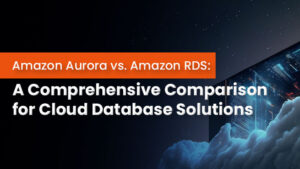
How to Apply Cybersecurity in Fintech for User Protection
Introduction As fintech evolves, it brings innovative financial solutions that enhance user convenience, such as mobile banking, digital lending, and secure payments. However, as financial
Exclusive Discount Offer: Unlock 3-Months of IPSpecialist’s Premium Plan for Just $59.99 $15.99! Save $44 Today! Subscribe Now!

Introduction As fintech evolves, it brings innovative financial solutions that enhance user convenience, such as mobile banking, digital lending, and secure payments. However, as financial

Introduction In the realm of cloud computing, Amazon Web Services (AWS) offers a variety of managed database options that help organizations scale, secure, and optimize

Introduction In the ever-evolving landscape of cybersecurity, zero-day attacks pose a significant threat to businesses and individuals alike. A zero-day attack exploits a software vulnerability
Table of Contents
The favored Software Development Lifecycle (SDLC) framework for application development in recent years has been DevOps, at least officially. Ineffective DevOps environments, continuous operations, and automation have become essential components of the DevOps domain.
The ongoing management, change, updates, development, and processing of the database (code) has emerged as a bottleneck for many DevOps organizations. This has forced engineers to invest countless hours in database development rework that supports continuous release cycles, as expected for a streamlined DevOps SDLC pipeline.
Dive deeper into the world of cloud technology and IT mastery with IPSpecialist! Get the best course by accessing comprehensive DevOps certification training and resources. From beginner-level DevOps courses to mastering Microsoft, AWS, Cisco, and more, IPSpecialist offers diverse courses, study guides, and practice exams tailored to amplify your skills. Elevate your career in the dynamic realm of DevOps—explore their offerings now!
Imagine a world where database changes flow seamlessly alongside application code, deployments are automated and reliable, and downtime is a distant memory. Database DevOps makes this a reality by applying the principles of DevOps to database management. It’s about breaking down the walls between development and operations, fostering collaboration, and automating tasks to streamline the entire database lifecycle.
At the core of Database DevOps lies CI/CD (Continuous Integration and Continuous Delivery). This powerful duo keeps the development and release process flowing like a machine.
While the benefits of Database DevOps are undeniable, implementing it comes with its own set of challenges:
Use a centralized version control system where the database code is stored, merged, and modified. Storing static data, scripts, and configuration files all within a unified source control system makes it easy to roll back changes and synchronize database code changes with the application code development following a CI/CD approach.
Automate build operations that run alongside application releases. This makes it easy to coordinate the application and database code deployment process. The database code is tested and updated at the same time a new software build integration occurs, according to the underlying database dependencies.
The CI/CD approach with a centralized version control system for database and application code makes it easier to identify database problems when a new build is checked in and compiled into the repository.
Developers can identify and address problems earlier during the SDLC lifecycle following a fast-paced DevOps framework’s continuous deployment and release cycles. Conversely, traditional database management operations require slow and manual review, testing, and approval processes for the corresponding database code.
A diverse ecosystem of tools has emerged to empower Database DevOps practitioners. Here are some key categories:
The future of the DevOps database is bright and brimming with possibilities! Here are some key trends and areas of growth to look forward to:
Automating database deployments, configuration management, and scaling will continue to play a significant role.
AI and ML-powered tools will help predict performance bottlenecks, automate database optimization, and enable self-healing databases.
As organizations move increasingly towards cloud environments, the demand for cloud-native databases like Google Cloud Spanner, Azure Cosmos DB, and Amazon Aurora will skyrocket.
This will require DevOps specialists with expertise in managing and securing these databases in cloud environments.
Data breaches and compliance issues are ever-present concerns. DevOps specialists must be well-versed in database security best practices and comply with regulations like GDPR and HIPAA.
With the growing complexity of databases and rising demand for automation, we’ll see a greater emphasis on DevOps Database specialists with a deep understanding of database management and DevOps principles.
Every DevOps implementation is unique to the organization adopting the framework. Database DevOps can conceptually take several guidelines from the application code DevOps playbook and integrate database code development and management along with the application code for similar SDLC performance and efficiency gains.
Database DevOps is more than just a trend; it’s a fundamental shift in how we approach database management. By embracing collaboration, automation, and CI/CD, we can unlock faster development cycles, improved software quality, and a more agile approach to data. So, are you ready to join the Database DevOps revolution?
Answer:
While Database DevOps brings significant benefits, there are hurdles to overcome:
Answer:
Answer:
Answer:
Database DevOps offers numerous benefits:
© 2024 All rights reserved | Privacy Policy | Terms and Conditions | Sitemap | Cookie Policy




